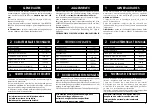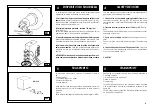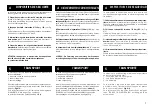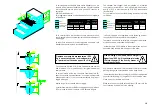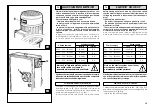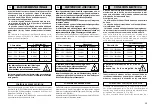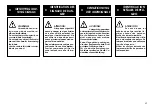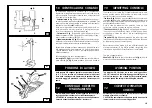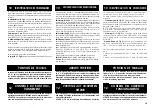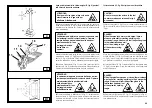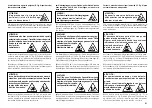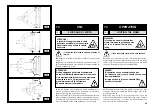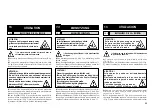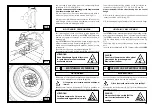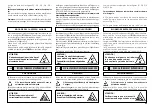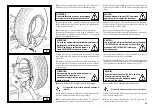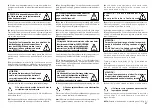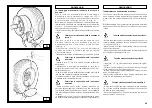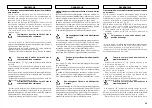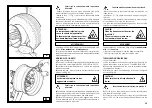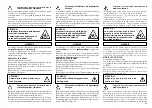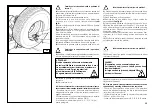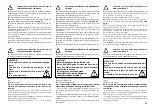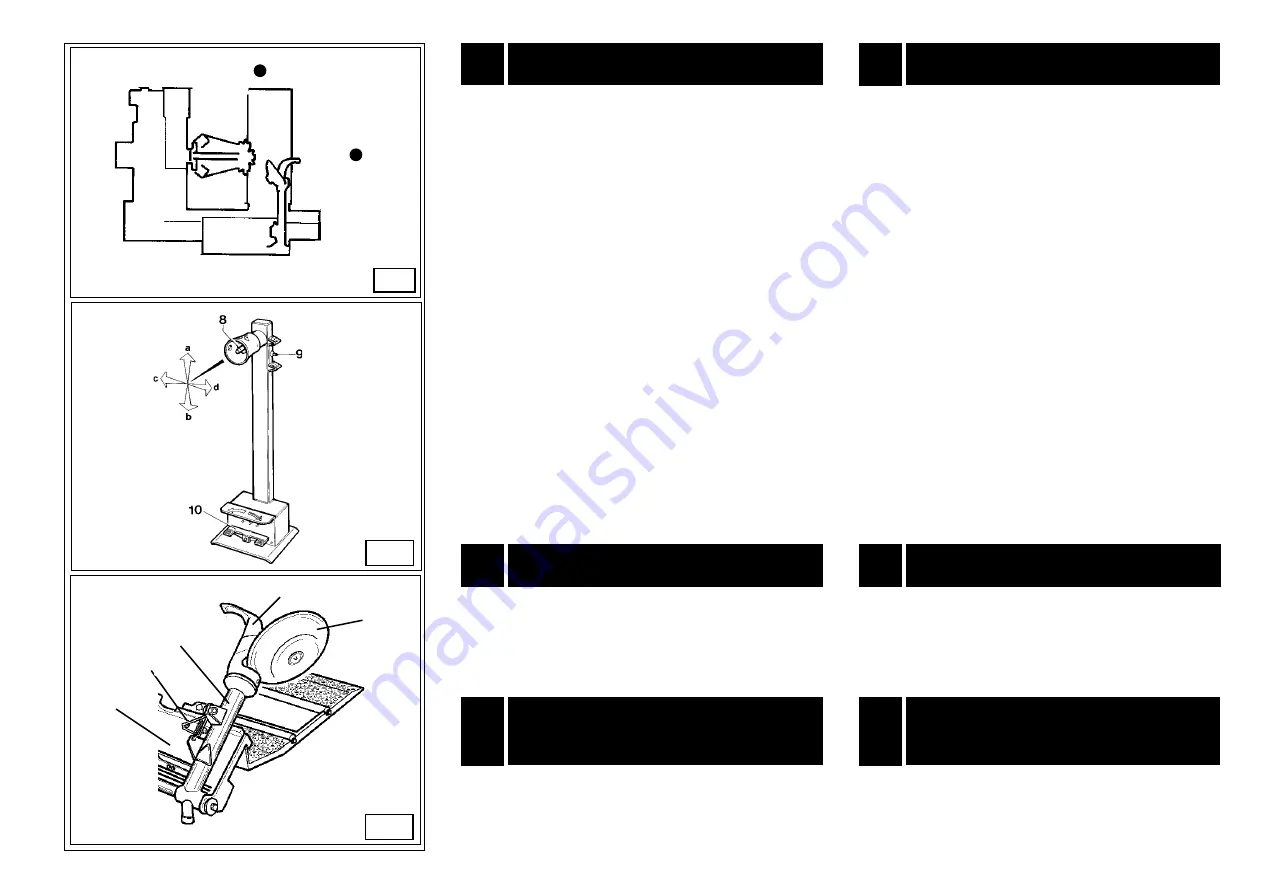
1
10
IDENTIFICAZIONE COMANDI
10
IDENTIFYING CONTROLS
La colonnetta mobile porta comandi (fig. C) consente al
-
l'operatore di scegliere la posizione di lavoro di volta in volta
più conveniente. Su questa colonnetta sono concentrati tutti
i comandi; più precisamente:
- Il manipolatore (8, fig. C)
in posizione
[a]
alza il braccio por-
ta-autocentrante; in posizione
[b]
lo abbassa; in posizione
[c]
avvicina il carrello porta-utensili e la pedana mobile all'auto-
centrante, in posizione
[d]
lo allontana.
Nota: per meglio memorizzare quest'ultima operazio-ne,
sulla protezione del manipolatore è stato praticato un
foro in corrispondenza della posizione
[c]
.
- L'interruttore (9, fig. C
) azionato verso l'alto apre i bracci
dell'autocentrante (BLOCCA); azionato verso il basso chiude i
bracci dell'autocentrante (SBLOCCA).
- Il pedale a bilanciere (10, fig. C)
consente, se azionato in uno
dei due lati, di far ruotare l'autocentrante in un senso o nell'altro
come indicato dalle frecce poste sulla pedaliera.
Entrambe le rotazioni possono avenire con due diverse velo-
cità predisponendo il commutatore (12, fig. B/6) in posizione
1 per la rotazione lenta e in pos. 2 per una rotazione veloce
dell'autocentrante.
Sullo smontagomme sono inoltre presenti:
La maniglia (15, Fig. D)
che consente il ribaltamento del braccio
porta utensile (
14, Fig. D
) dalla posizione di lavoro a quella di
Nello schema B/8 vengono riportate varie posizioni di lavoro
(A, B, C, D) che saranno poi richiamate durante le istruzioni
d'uso dello smontagomme. Operare dalle posizioni indicate
consente maggiore precisione, velocità e sicurezza per chi
opera.
The diagram B/8 illustrates the various working positions
(A,B,C,D) referred to in the following pages describing how to
use the tyre changer. Use of these positions ensures greater
precision, speed and safety for those using the machine.
The mobile control centre (fig. C) enables the operator to work
at any position around the machine. On this mobile control
centre the following controls are located:
-The lever (8, fig. C)
which in position
[a]
lifts the chuck arm and
in position
[b]
lowers it; in position
[c]
moves the tool holder arm
and the sliding table towards the self-centering chuck and in
position
[d]
moves them away.
Note: in order to memorise this operation, there is a hole
in the lever guard corresponding to position
c
.
-The chuck switch (9, fig. C)
when moved upwards, opens
the arms of the self-centering chuck (LOCKING), and when
moved down, closes the arm of the self-centering chuck
(UNLOCKING).
-The pedal (10, fig. C)
when pressed on the left or right side
rotates the self-centering chuck in the same direction as shown
by the arrows placed on the foot pedal.
Both rotations can be made with two different speeds, just
placing the selector (12, fig. B/6) in position 1 for getting slow
rotation and in position 2 for fast rotation of the turntable
The tyre changer also has:
Handle (15, Fig. D)
to tip the tool carrier arm (
14, Fig. 4
) from its
work to its non-working position and vice-versa.
POSIZIONE DI LAVORO
WORKING POSITION
Prima di iniziare ad utilizzare lo smontagomme sono necessari
alcuni controlli per verificarne il corretto funzionamento.
ATTENZIONE: Le operazioni che seguono vanno effettuate con
il braccio portautensili in posizione di "fuori lavoro".
CONTROLLO CORRETTO
FUNZIONAMENTO
12
CORRECT OPERATION
CHECKS
12
Before using the tyre changer, a number of checks should be
made to ensure it works correctly.
CAUTION! The operations described here should be done with
the tool carrier arm in its non-working position.
B/8
D
C
a
b
c
d
1
1
1
13
1


